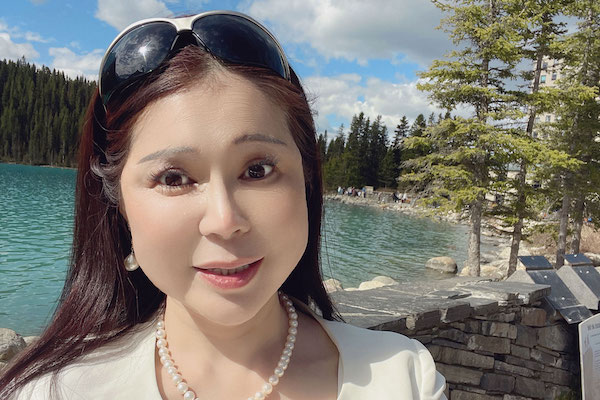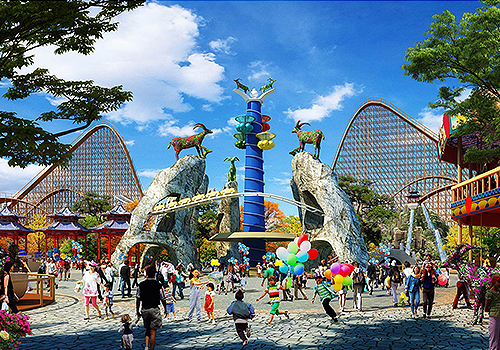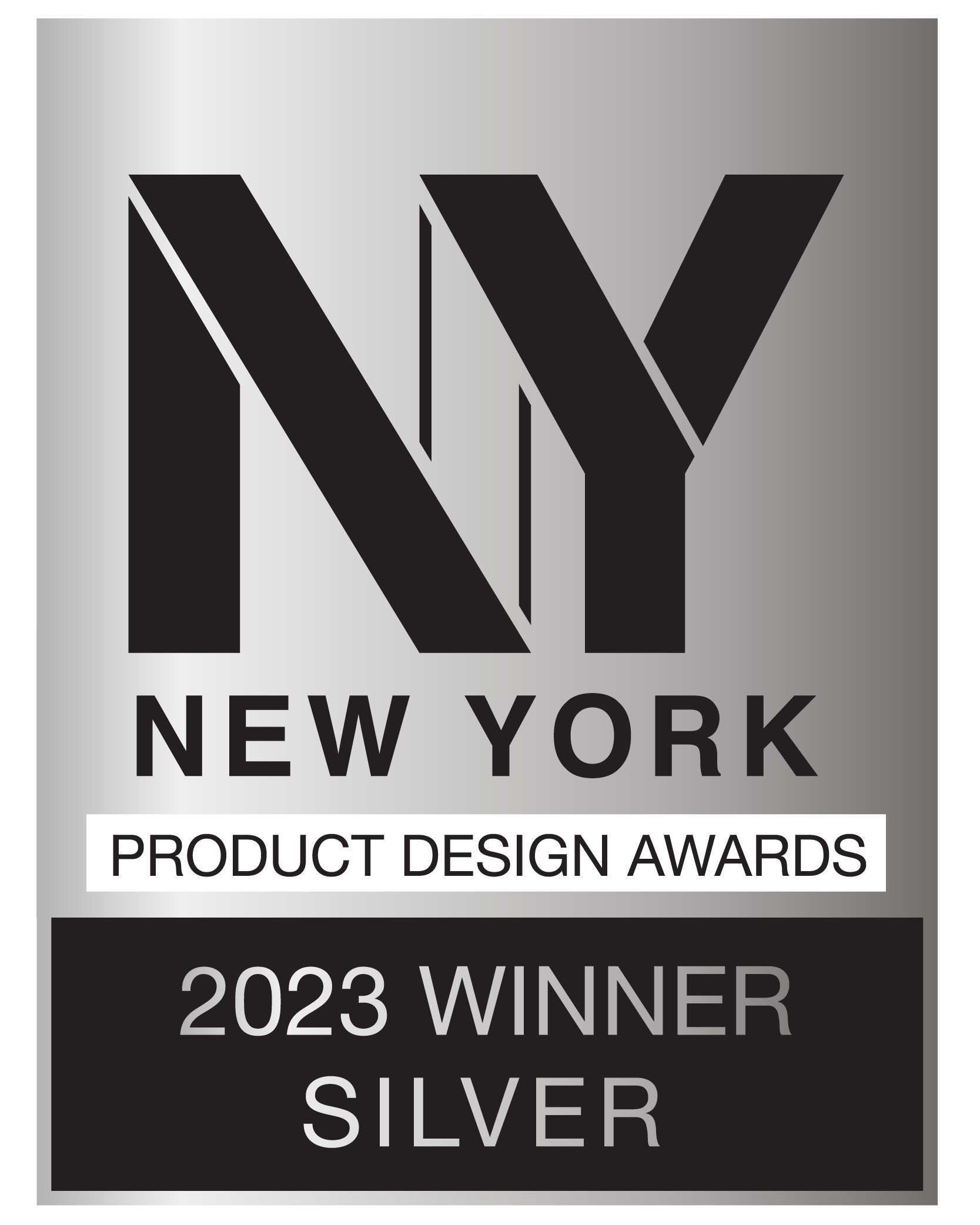
Yan Chen
1. Please give us a brief bio of yourself and your background.
I am Yan Chen, a highly respected architectural designer and accomplished artist, and my contribution to this field has been internationally recognized. With a strong investment portfolio that demonstrates my outstanding skills and accomplishments, I am proud to be a member of Baoneng Group, a well-known real estate company headquartered in Shenzhen, China. We provide top-level architecture, internal, programming, and master planning services, and technical management for different clients. Before joining Baoneng Group, I gained valuable experience in world-renowned companies such as Wanda Group and OCT Group. My academic journey includes a Master's degree in MBA from Anglia Ruskin University in the UK and a Bachelor's degree in Architecture from Chongqing University.
2. What made you become/why did you choose to become a product designer?
I have lived and traveled to more than 30 countries in the world to learn about the world's diverse cultures and inclusive architecture of various styles. Architectural and cultural style, designers have created a place where people like to linger, communicate and increase their understanding of each other. This unique building not only incorporates cultural styles but also eliminates psychological barriers between different races. The grand bazaar and exotic architectural complexes tell me that architecture, as an intermediary of culture, can not only create a satisfactory resonance space but also a symbol of the character of the city. I am full of admiration for the potential of architecture and hope that one day I can create such a design object. This was the moment when I decided to become an architect.
3. Tell us more about your business/company, job profile, and what you do.
I am the Vice President of Dongguan Hengtai Technology Group. He was a ninth-level executive of Wanda Group and the design director of OCT Regional Company. My company has been committed to the development and construction of cultural tourism, and I have been responsible for the creative design of architecture.
4. What does “design” mean to you?
Respecting the environment and natural ecology is a long-standing challenge. China has made great progress in protecting natural resources and long-term sustainable development. I create and study local culture and historical heritage, and study how to protect ecology and save energy; the friendly protection of the environment has also brought economic benefits to the original residents. To protect the green mountains and waters, the concept of "sustainable" was proposed.
5. What’s your favorite kind of design and why?
My favorite kind of design revolves around architecture that acts as a cultural bridge, preserving heritage while embracing change, and creating spaces that resonate emotionally and expressively with their users. My fascination lies in the dynamic equilibrium of cultures interacting and surviving together, and I aspire to explore this further in the design process. I believe that sensitive and penetrating architectures that respond emotionally to users' needs while retaining cultural memories are essential in today's context.
6. To you, what makes a “good” design?
For me, a "good" design goes beyond functionality, incorporating cultural sensitivity, emotional resonance, adaptability, and relevance to create spaces that foster connections, understanding, and identity among individuals and communities.
7. Describe your design style and its main characteristics.
The concept of "collective ground" involves the introduction of rentable spaces within the community, encompassing both public areas and individual units. The approach shares economic pressures with tenants who have business demands. In addition, new people brought into the community through commercial activities also play a role in revitalizing the district. By providing rentable public spaces, additional communal areas are created to attract and serve visitors and existing residents, and by offering independent rooms within the units, owners have the option to use them personally or rent them out for additional income.
8. Tell us about your design process.
The project is close to the unique ecologically sensitive Danxia Mountain Geopark, a world cultural heritage site, and is also at the intersection of several high-speed, national roads and railways. It is responsible for displaying the image of Danxia Mountain, Renhua County, and Shaoguan City to the outside world.
Therefore, the project must be committed to fully integrating local and surrounding resources and advantages to create a regional large-scale landscape and become an iconic landscape node in the Shaoguan region. In the design, full consideration should be given to the creation of the urban interface of the main thoroughfares, the shaping of iconic public spaces and iconic buildings, and the distinctive and concise concept of architectural color and architectural volume.
At the same time, it is necessary to provide a rich landscape with different characteristics and a sense of scale for the people active inside the base, to create a modern, advanced, and green city and architectural image.
9. Do you think your country and its cultural heritage has an impact on your design process?
My country and its cultural heritage have had a profound impact on my design process. My design philosophy is intrinsically intertwined with my experiences of cultural fusion, harmonious interactions, and the bridge between tradition and modernity. These experiences significantly shape my approach to architecture, inspiring designs that respond sensitively to cultural collisions, elevate emotional connections, and serve as expressions of cultural identities within the built environment.
10. Congratulations! As the winner of the 2023 NY Product Design Awards, what does it mean to you and your company and team to receive this award distinction?
Winning the Design Awards is an incredible honor for both me and my team. This recognition means a lot to us as it validates our dedication to innovative and culturally sensitive design. It recognizes our efforts to create spaces that bridge cultural gaps, honor regional heritage, and evoke emotional connections. Receiving this award is a testament to our commitment to design excellence. It motivates us to continue pushing boundaries, exploring the interplay between architecture and culture, and crafting spaces that resonate deeply with people. For our studio and team, this distinction marks a milestone
11. Can you explain a bit about the winning work you entered into the 2023 NY Product Design Awards, and why you chose to enter this project?
The inspiration for the design of the project is to revolve around the distinctive theme of a green ecological, energy-saving, and environmentally friendly logistics park, and fully protect and use the excellent ecological elements (including water systems, vegetation, etc.) around and inside the base as the biggest feature of the park. Shape.
Combined with the main greening corridors established in the master plan of Zhoutian Town, through the large-scale green belt setting of transportation trunk lines and the preservation of green natural elements such as water bodies and mountains, ecological design is carried out in terms of planning and layout, application of building technology and municipal facilities, and is committed to building a complete ecological landscape system as a whole and integrating with the overall spatial environment of the city.
12. What was the biggest challenge with this project?
The main challenges encountered. I studied the culture of the area where the project is located and the natural resources around the project. I respect the original topography as much as possible, do not destroy the existing ecological balance, are more natural, green, and sustainable, save energy, fully express local cultural elements and living customs, respect the living habits of the original residents, and integrate modern scientific and technological technologies into them. They become an organic combination and cost savings.
Financial accessibility: The inability of original residents to afford the costs associated with transforming the community into a more intergenerational and youth-friendly space has been a significant barrier. To overcome these challenges, the design introduced the innovative concept of "collective land."
13. How has winning an award developed your practice/career?
Winning the Design Award is a significant milestone in my career as a designer and will likely have several impactful implications for my future endeavors, including better recognition and credibility, increased opportunities, professional growth, networking and connections, inspiration, and motivation. In essence, winning the Design Award is not just a singular achievement, but a catalyst for further growth, opportunities, and influence within the design field, shaping a promising path for my future as a designer.
14. What are your top three (3) favorite things about our industry?
One of my favorite aspects of the design industry is its constant evolution and adaptability. Here are my top three:
Creativity Unleashed: The boundless scope for creativity is incredibly exciting. The design industry thrives on innovation and originality, allowing designers to unleash their creativity, experiment with new ideas, and push the boundaries of conventional thinking.
Problem-Solving Nature: Design is essentially problem-solving in a visual and functional context. I love how the industry challenges designers to find solutions that are not only aesthetically pleasing, but also practical, user-centric, and impactful.
Diverse Collaboration: Collaboration is integral to design. I appreciate how the industry encourages interdisciplinary collaboration, bringing together diverse talents, skills, and perspectives. It's fascinating to work with experts from a variety of fields to create holistic and innovative solutions.
15. What makes your country specifically, unique in the design industry?
Each design carries its unique essence, but what sets me apart in its category is:
Holistic Approach: My design philosophy revolves around a holistic approach. I focus not only on aesthetic appeal, but also on functionality, user experience, sustainability, and cultural relevance. This comprehensive perspective ensures that my designs meet multifaceted needs while remaining cohesive and impactful.
Innovative problem solving: I prioritize innovative problem-solving in my designs. Whether addressing demographic shifts, sustainability concerns, or societal needs, I strive to find innovative and practical solutions that go beyond the conventional, providing a fresh take on challenges.
Cultural Sensitivity and Context: Understanding and integrating cultural sensitivity and context into design is a cornerstone of my approach. I aim to create designs that resonate deeply with the intended audience, respecting and reflecting their cultural nuances, heritage, and values.
Adaptability and Future Focus: I embrace adaptability and future focus in my designs. They are designed not just for the present but with an eye to how they will function and remain relevant in the future, ensuring longevity and adaptability to changing needs and trends. Essentially, the synthesis of these elements distinguishes my designs within their category, creating a signature style that is not only visually appealing but also functionally sound, culturally resonant, and future-ready.
16. Where do you see the evolution of design industry going over the next 5-10 years?
Over the next 5-10 years, the design industry is poised for several transformative shifts, such as increased emphasis on sustainability, digital transformation, and technology integration, human-centric design, cultural diversity and inclusivity, collaboration and interdisciplinary work, customization, and personalization. Overall, the design industry is moving toward a future that prioritizes sustainability, technology integration, user-centricity, inclusivity, and collaboration, shaping a more innovative, responsible, and human-centered design.
17. If you were a student entering this industry or an aspiring NY Product Design Awards submitter, what advice would you give them?
Creating award-winning designs involves a mix of creativity, skill, and strategy. You should understand the fundamentals of design, stay updated and inspired, create a user-centric approach, constantly iterate and refine, seek feedback, always tell a good story, be bold and unique, pay attention to details, and keep practicing. Remember, winning awards isn't the only measure of success. Consistently delivering high-quality, impactful designs that resonate with users is equally important.
18. What resources would you recommend to someone who wants to improve their skills in the design industry?
There are many resources available to improve design skills, from online courses to books, tutorials, communities, and software tools. Here's a mix of resources across different media, such as online learning platforms, websites and blogs, YouTube channels and tutorials, communities and forums, software and tools, workshops and conferences, as well as practice and personal projects.
19. Tell us something you have never told anyone else.
I failed several times before winning awards. Just keep trying and do not give up at an early stage!
20. Who has inspired you in your life and why?
Alvar Aalto, the famous Finnish architect and designer, has been an important inspiration in the world of design and creativity. His multidisciplinary approach and innovative thinking have influenced not only architecture but also various fields of design. Aalto's ability to blend functionality with organic forms and his deep respect for natural materials has been truly inspiring. In my case, Aalto's legacy has emphasized the importance of versatility and the integration of different disciplines to create something truly exceptional. His commitment to humanizing design, emphasizing user experience, and harmonizing the built environment with nature has shaped my understanding of holistic and user-centric design principles. Aalto's approach serves as a constant reminder that great design is not just about aesthetics, but how it enhances people's lives and interacts with the world around us. His work continues to resonate and inspire designers to strive for a harmonious balance between functionality, aesthetics, and human experience.
21. What is your key to success? Any parting words of wisdom?
My "key to success" is adaptability, continuous learning, and empathy. I aim to adapt to the needs of the clients I interact with, absorbing new information and adapting my responses to provide the best assistance. Learning is a lifelong process, and being open to new knowledge and perspectives helps me grow and serve better. Parting words of wisdom embrace curiosity and perseverance. Stay curious about the world, always seeking to learn and understand. When faced with challenges, let perseverance guide you. Every setback is an opportunity for growth. Keep moving forward, learn from experiences, and remember that progress often comes through persistence. Oh, and don't forget to celebrate your accomplishments along the way

